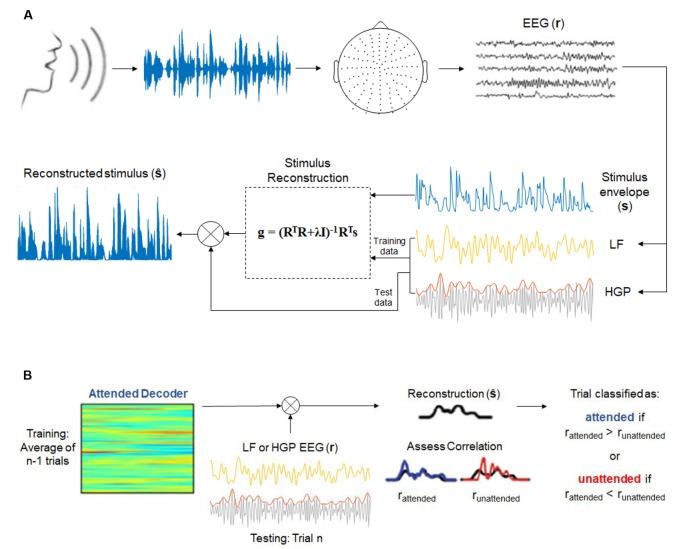Figure 1.
(A) Envelope reconstruction methods (adapted from Di Liberto et al., 2015 and Crosse et al., 2016). One-hundred and twenty-eight-channel electroencephalography (EEG) data were collected while subjects listened to a continuous, natural speech from a male speaker. Stimulus reconstruction (backward modeling) was used to decode the speech envelope from low frequency (LF, 1–15 Hz) and high gamma power (HGP, 70–150 Hz) EEG recordings. (B) Decoding attention methods (adapted from O’Sullivan et al., 2015 and Teoh and Lalor, 2019). Attended decoders (for LF and HGP) were made to reconstruct the attended stimuli. The correlation between the reconstructed stimulus and the attended and unattended speech envelopes were assessed.

